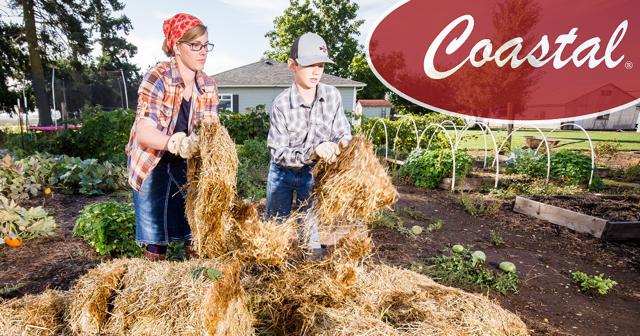
Tilling the garden is a mid-fall ritual for a lot of folks. It makes sense to till out the weeds and bring some fresh soil up to the surface. But there’s another option that quite a few backyard gardeners and farmers use to boost their compost, feed some of their animals, as well as improve drainage, aeration, and microorganisms in their soil. It’s called the no-till garden.
Start with a Clean Up
Every no-till garden starts with a fall garden cleaning. Pull out corn stalks and anything else still standing. Be sure to remove any weeds or plants that can go to seed and properly dispose of them, or compost them in a special pile that gets hot enough to kill all the seeds. These include lettuce, leeks, cabbage, onions, and others. The rest can be laid down in the garden as the first layer of your no-till garden. You can also feed those plants to your livestock.
What is a No-Till Garden?
Basically, it’s the process of covering your garden in order to add nutrients and improve soil quality over the winter without turning the soil. Instead, you layer organic materials on top of the area where you want to plant in the spring.
Here’s how to put no-till gardening to work on your property.
Find a Sunny Spot. You need plenty of sunshine and rain this winter for the composting to work. Plus, you want your garden to be in a sunny spot during the spring and summer.
Smother the Soil. Cover the area you want to plant with cardboard, several layers of newspaper (anywhere from 5 to 10 layers), straw, hay, or leftover corn stalks. Just about anything that will completely covers the topsoil and composts will work. Then weigh it all down with some mulch. In fact, don’t skimp on the mulch.
Add Organic Materials. Pile on some rotting leaves, manure, compost, and or straw to your area.
Add a Layer of Wood Chips or Bark. Then finish it off with another six-inches of organic materials.
Water Thoroughly. If you live in an area that gets a lot of rain in the winter, you’re all set. If not, you may need to add water periodically throughout the fall and winter. Additionally, add some nitrogen. You can find bags of it at your local Coastal.
Planting in Spring
Depending on how well everything composted under the cardboard or newspaper, you could have some great soil for your spring planting. If not, it could take another year to get the soil just right. But, that doesn’t mean you cannot use your newly composted soil this year. Just push aside the mulch layer where you want to plant. In the fall, cover that spot back up and let it cook for another season.
Coastal is Your Year-Round Garden Center
You’ll find bales of straw, compost, fertilizer, seeds, tools, and a whole lot more in the garden center of your Northwest owned and operated Coastal. Stop by and pick up everything you need for your own no-till garden, including the seeds to get your garden started in the spring.
